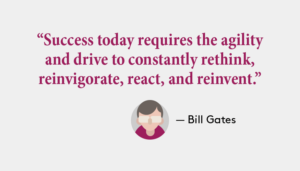A growing number of companies are turning to the cloud in order to manage more of their business operations, with enterprise resource planning (ERP) solutions that can streamline key everyday processes becoming increasingly popular. But if you’re considering implementing a cloud ERP solution, do you know what pitfalls to avoid to ensure the process runs as smoothly as possible?
Companies using ERP solutions can expect to benefit from improved efficiency, greater flexibility and higher productivity as many aspects of managing their business become simpler. But these positives will only be realised if companies can implement the tools successfully – and this can be a harder task than it appears.
There is a lot to think about when migrating key IT operations to the cloud and any mistakes could mean a company ends up with a badly-integrated system that does not meet their needs. Therefore, we’ve highlighted five of the most common pitfalls organisations encounter during their ERP implementations that you need to avoid.
1. Not devoting enough time and resources
Failing to appreciate the scope of the project is one of the biggest mistakes companies make when embarking on a cloud ERP migration – and as a result, failing to dedicate the time and resources the initiative deserves can lead to big problems.
As an ERP system will underpin a business’ entire operations, it is not a project that should be taken on lightly – it needs to be the main priority until it is finished. This also means your company’s top decision-makers need to be involved every step of the way – tasks cannot be delegated last minute to staff members who do not really understand the project.
For this reason, you must decide in advance which staff, time and resources you will dedicate to the project. Having executive buy-in is vital, and everyone from top to bottom must be prepared for the huge upheaval such a project will bring.
2. Not doing your data due diligence
Because data will be stored on the servers of a cloud provider, it’s easy to assume they’ll take care of all the necessary security and governance arrangements. But you should not be complacent about this, as you will still ultimately be responsible for the data and will have to answer to regulators like the Information Commissioner’s Office if there are any issues.
If you don’t have the right processes in place, your business-critical information may be compromised. Therefore, you must understand what you are responsible for, which audits you need to undertake or review, and what you need to be aware of during the data migration process. If you are using US suppliers, are they signatories to the Safe Harbor Agreement?
Checking your provider offers the highest enterprise-grade security is also vital, as is understanding who will have access to what information. Cloud tools allow you to easily collaborate with people inside and outside of your organisation, so you must ensure that at a high level, your employees, partners and vendors only have access to the data they need.
3. Not having clean data
One of the biggest issues companies may encounter when attempting to migrate data to their new system is if this information is poor quality or not ‘clean’. For a migration to work, your data must be of a high quality, which means the right information must be in the correct fields. For example, entries such as ‘same as phone number’ written in the fax column are likely to cause issues during the data migration process.
Therefore, checking all your information is a must before attempting any migration – and these high standards need to be retained going forward, so that if you ever want to remove the data in the future, it will be as straightforward as possible. It might seem like a lot of work for companies that have been less than diligent over the years, but it’s a key part of a successful migration.
4. Not fully understanding how your business processes work
In order to make the ERP implementation process as smooth as possible, your solution provider needs to know exactly how your business works so they can tailor the solution to your requirements. But it is surprising how many firms do not actually have a clear idea of exactly how things work in their organisation. This can lead to processes not working as your employees expect them to.
As well as being honest and open with your provider so that they can make sure the software is working in the best way for you, companies must also have an understanding of how they want their processes to work moving forward – and this isn’t necessarily the same as how they are currently working.
For instance, you might only be carrying out a process in a certain way as a workaround due to the limitations of your existing system. But if you can identify how you want the process to work and discuss this with your solution provider, they can show you how your new technology might allow you to put in place a more effective solution.
5. Not considering the training requirements
One aspect of moving to cloud ERP that is often overlooked is what the impact on your staff will be. While bosses might be enthusiastic about the prospects of greater efficiency, they must ensure these benefits are effectively communicated to their employees so they can understand why the migration is happening.
In the real world, some employees will always be resistant to change and will be used to the ways in which they already do things. Therefore, you need to ensure they are comfortable using the new software and consider your training requirements early on.
It’s important to make sure you have your best people involved in this, as engaged employees will act as evangelists for the new software and help convince people of the benefits, so the software can be used to its full potential.
Considerations include deciding whether you would like to take a face-to-face training approach, provided by your solution provider, or whether a ‘train the trainer’ approach would work better if you feel employees would be more receptive to being trained by someone they know and trust.
By taking the above into consideration, you can hopefully avoid some of the pitfalls commonly experienced by companies during the implementation stage.
If you would like to know more about how to go about adopting a cloud ERP solution, please don’t hesitate to get in touch with one of our team of NetSuite ERP implementation experts.
Please leave your comments below and share with your colleagues.










